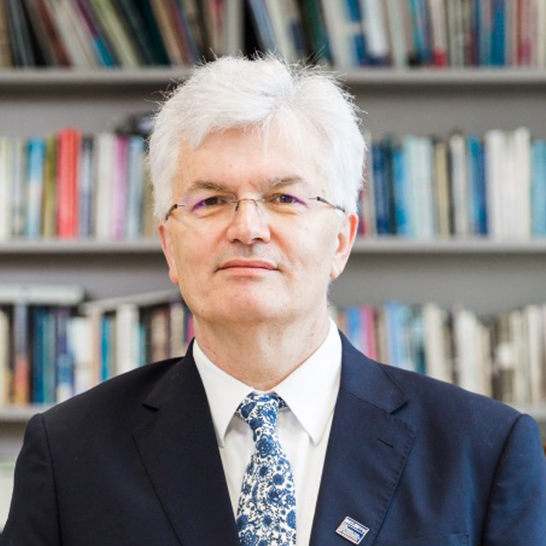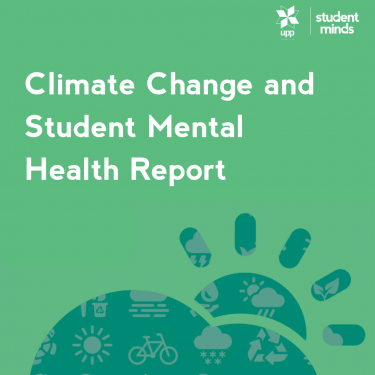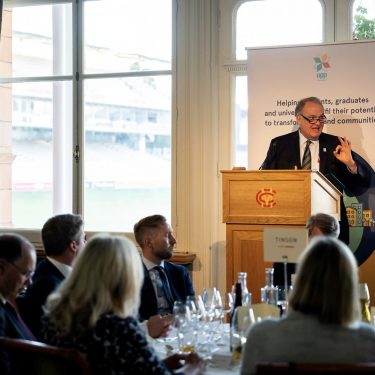For the published lecture ‘An irredeemable time? The rising tide of hostility toward universities’ please click here.
This is Professor Davis’ lecture, ‘An irredeemable time? The rising tide of hostility toward universities’ in full.
It is an unexpected, but warmly appreciated honour to deliver this inaugural UPP Foundation lecture in this extraordinary place.
One can only admire an organisation which aims to help ‘the UK Higher Education sector enrich communities and transform lives’, with a particular focus on the civic role of the university. This will be our theme for today.
There are so many distinguished leaders here any set of acknowledgements will be insufficient. Let me, of course, recognise the Chair of UPP Trustees, Dr Paul Marshall, the Vice-Chancellor of Monash University – and my wife – Professor Margaret Gardner, and her distinguished predecessor at Monash, and now Principal of Kings College London, Professor Ed Byrne.
Finally, it is a delight to be at the Globe Theatre – this cockpit that can hold the vast fields of France, the wooden O, the ‘brightest kingdom of invention’ as Shakespeare called his theatre.
The original, of course, burnt to the ground in 1613. It was rebuilt but then suppressed by government decree in 1642. In what the Long Parliament called a ‘time of humiliation’ there would be no place for the ‘lascivious mirth and levity’ associated with the public stage.
So let this topic – the fate of institutions that clash with authority – begin our evening.
For this too may prove a time of humiliation. It seems strange that institutions which educate the young and invent the new should be under threat. What could be more optimistic, more worthwhile, than a university?
This audience cares about higher learning. Yet evidence abounds of a rising tide of criticism and hostility toward public universities.
In Burnt Norton TS Eliot suggests that times present contain times past, this moment and our history always rubbing together. So when I turn to the past, it is to wonder if this moment is irredeemable, fixed already. Can we still shape our future?1
Dissolving the monasteries
The original Globe was built in 1599. But let’s go back two or three generations earlier still. It is 1536, and King Henry VIII has a cunning plan.
With one bold move – by closing down monasteries across England, Wales and Ireland – the King can solve many problems.
First, he can salve his conscience. The newly Protestant Henry knows that leading scholars denounce monasteries as institutions no longer fit for the modern world. Why segregate religious women and men in closed communities of contemplation when souls are needed to lead local parishes, educate children, provide alms to the poor?
Across Reformation Europe monasteries, priories, convents and friaries are being closed down as places of popular superstition, out of step with the times. Henry’s kingdom could do the same, replacing old institutions with new values.
Second, dissolving the monasteries could solve a political problem. Catholic religious orders are torn between two rulers – a king who has recently declared himself head of the Church in England, and the Pope in Rome, who asserts spiritual leadership over all Christendom.
With an end to monasteries, all England’s priests, monks and nuns would come under the control of bishops appointed by Henry. The King can end religious practices he no longer finds acceptable, along with powerful figures who owe allegiance beyond the kingdom.
And finally there is money – serious money. Over the previous centuries, monasteries have become wealthy. Bequests from the faithful, control of pilgrim routes and, above all, vast landholdings have allowed religious houses to be self-sufficient, independent of political power.
Monasteries, priories, convents and friaries pay no taxes, yet across the realm they control up to a quarter of arable land in England, taking for themselves revenues that might otherwise flow to the crown.
Close them down and all that wealth would belong to the King.
But how to make the case? Monasteries might be mocked by scholars but for devout local communities they provide employment, trade and spiritual support – those monks, up before dawn to intone Matins, are praying for everyone.
So Chief Minister Thomas Cromwell organises ‘visitations’ – a sort of research assessment exercise – to test whether religious houses are keeping their vows. He is shocked, shocked, by what the inspectors find, and publishes the results so Protestant sensibility can be outraged.
Armed with evidence that monasteries are not meeting community expectations, the central government begins by dissolving first the smallest, weakest institutions. Then, with growing confidence after a failed revolt, the state turns on even the largest, most powerful monasteries and convents.
Between 1536 and 1540 Henry VIII and his chief minister dissolve the religious orders. Soldiers chase monks, friars and nuns from their former abodes, and poke holes in the roofs so rain and wind make the old buildings uninhabitable.
They leave a landscape dotted with picturesque ruins awaiting a future generation of Romantic poets who, like William Wordsworth, could muse on the ‘still, sad music of humanity.’
But the King is not sad. By selling land that once fed monks and nuns, the Crown has acquired much treasure. Some of this windfall Henry spends on new cathedrals, some on endowing university colleges. Most, however, he squanders fighting the French.
Universities
No historical analogy is exact, but Henry’s dissolution of the monasteries should give pause when we think about how political authorities now view universities.
Like the monasteries, universities claim distance from the world in favour of more lofty goals. Through benefaction and shrewd investment, universities too have acquired significant cash and landholdings.
While it was never entirely true that a pilgrim could walk between Oxford and Cambridge without leaving college-owned land, in 2015 the combined wealth of the Oxford colleges alone was estimated at £4.1 billion, including 37,446 acres of land holdings.2
That same year, the published accounts for University College London, an exempt charity, declare for insurance purposes the value of UCL buildings around Bloomsbury at £3.1 billion.3
Here is wealth accumulated in a time of public austerity, bolstered in recent years by philanthropic campaigns designed to free universities from dependence on the state.
Like the Tudor monasteries, today’s universities pledge allegiance to more than local concerns. They speak to a global scholarly audience with values that frustrate government – all those papers in obscure academic journals, all that intellectual property locked up in institutions that could instead be providing quick economic returns for the taxpayer.
And so we hear a rising chorus of complaints about arrogant universities that resist government priorities, that value research over teaching, that do not address community ambitions.
In Britain and Australia higher education ministers have not held back – universities are labelled as inefficient, with overpaid vice-chancellors and overly generous wages and conditions for staff in a time of austerity. These institutions seem ripe for ‘efficiency dividends’.
Even the core value of universities – expert knowledge to be shared with students and the wider community – is devalued when then Justice Secretary Michael Gove declares ‘people in this country have had enough of experts.’4
This year the language has become even sharper, with Labour Lord Adonis attacking universities for ‘greed’, for running a ‘fee cartel’ that leaves students with Frankenstein-scale debt.
Economist Alison Wolf urges careful thought about any further expansion of university places. The courses are expensive and graduate outcomes uncertain. She notes the polytech sized hole in the British tertiary system, signalling the absence of shorter, more focused qualifications as alternatives to the traditional degree.5
In Australia, Education Minister Simon Birmingham has criticised university surpluses, and described institutions as burgeoning bureaucracies which benefit from ‘the rivers of gold’ poured into them as student enrolments have grown.
If this is what our champion in government thinks, the Minister for Education, what do the critics say?
In such a climate, asks higher education analyst Simon Marginson, ‘What greater good would be lost if universities closed tomorrow?’
Such a view should be unthinkable. Once praised for their trustworthiness and standing, universities can no longer assume respect. A Pew Research poll early this year found a majority of Republican voters in the United States – 58 per cent – view colleges and universities as negative influences on their country.
There is evidence of voter resentment against the perceived privilege of university graduates and their view of the world.
Pollster Nate Silver argues that not economic disadvantage but education levels best explain the shift of votes from Democrat to Republican in 2016.6 CNN exit polls suggest Donald Trump received 71 percent of votes from non-college educated white males.
In Britain the divide seems equally sharp, with three out of four non-graduates voting to leave the European Union.
The reasons are not mysterious. People with a college degree steer the world toward technology-based employment which suits tertiary qualifications. This accentuates social division amid the collapse of familiar vocational courses, the eclipse of apprenticeships, the destruction of earlier certainties about hard work, fairness and opportunity.
Yet graduates are not happy either. They have accumulated unprecedented debt to take into a world of employment insecurity and unaffordable housing.
The good life we promised can seem elusive.
In Australia, as in Britain, there are signs of political impatience with the autonomy of universities and their failure to bend to government imperatives.7
Prime Minister Malcolm Turnbull has criticised the priorities of universities, particularly those with strong research records. Universities pay too much attention, he suggests, to peer review and not enough to local industry.
‘Everyone I talk to,’ said the Prime Minister, ‘believes that the problem is academics … their incentives are very much associated with publish or perish.’
His 2017 Budget announced significant cuts to university funding. The measure is now before the Parliament in Canberra, with some politicians making clear their hostility toward tertiary education.
‘Why should everyone else pay for your expensive university degree?’ asked one senator.
You will be encouraged to know the debate includes many unfavourable mentions of vice- chancellorial salaries.
It is not hard to understand the frustration of elected politicians. Universities pay little tax yet are remorseless in asking for more public money. They champion themselves as innovators yet resist political pressures for applied research and immediate impact. These large and wealthy institutions chase international students and drive up property prices.
Hence the suspicion among politicians that, like the monasteries, universities have lost sight of real life.
For our universities, much is at stake: a future government, impatient with contemplative institutions, might dissolve the university and replace it with something better aligned to the sovereign’s interests.
Government might require institutions to teach only, to be vocational, to specialise in just a few areas, to stay outside the rankings competition and serve local communities.
The idea that universities might follow earlier religious institutions into dissolution is not new. The legendary Registrar of Warwick University, Michael Shattock, made a similar observation in 1991, saying he could foresee universities being overtaken by rival sources of education.
Simon Marginson offered a similar analysis in 2011. It took Henry VIII, he noted, just five years to do the unthinkable – to close down a whole sector and claim their accumulated capital for the state. Stoke enough resentment about privilege, and the same fate might await our world.
And in his recent autobiography, First Confession, Oxford Chancellor Chris Patten observes that dissolving institutions has recent form in Britain. He talks about the closure of grammar schools in the 1970s and 1980s:
… the result was the destruction or total identity change of some great schools, grammar and direct grant …There had been nothing quite like it in England as an act of institutional destruction since Henry VIII’s and Thomas Cromwell’s dissolution of the monasteries in the sixteenth century.9
Yet another round of institutional destruction may be just ahead, delivered this time not by the state but by markets. For if politicians are often unhappy with tertiary education, others are plotting its immediate demise.
A bleak history of the future
A radical change must offer an alternative. You can’t just shut a familiar path without offering a plausible different road. To close the monasteries Henry VIII had to open many new parish churches, emphasise pastoral work, endow tertiary education.
And while a university was the only path to professional qualifications, its future seemed safe.
But that certainty began to change in the 1990s. Even before the internet, management author Peter Drucker predicted that long distance learning would end familiar tertiary education. Quoted in Forbes, Drucker predicted:
Universities won’t survive. The future is outside the traditional campus, outside the traditional classroom. Distance learning is coming on fast.
It is a message we now hear often. The Washington Post predicts a ‘profound structural and economic shift in favour of employers, students and parents.’ The Economist likewise promised the inevitable ‘reinvention of the university.’
This central concept is that of creative destruction, a familiar trope in a world in which so many businesses – book publishing, video rental stores, matchmaking – fold under assault from new technologies.
There are iPads filled with texts about the imminent disruption of universities. A teaching model with a millennium of history, we hear, is about to vanish like so many books from the monastery libraries of Henry’s era.
No more lecture theatres where academics cast bogus pearls before real swine, as Isaiah Berlin once described undergraduate teaching.
The broiling inventiveness of entrepreneurs will challenge, erode and replace the old. Silicon Valley becomes a symbol of permanent undermining and reinvention.
As economist Joseph Schumpeter argued, markets are never stationary. They evolve constantly with improving technology. The old is overthrown from within as new inventions, new forms of transport, new competitors simultaneously demolish existing local economies and create fresh industries.
To make his point about creative destruction, Schumpeter used the railways as his example, pointing to unintended changes wrought by the Illinois Central Railroad.
Before the railway arrived, a local economy of small farms served the nearby Chicago market. They were close enough to transport produce to the city, but protected by distance from competition. Prices were good and the local farms thrived – until the 1850s, when railways pushed into the mid-west. New tracks opened up untapped agricultural land, supported by advances such as grain elevators to load produce onto trains.
The cost of freight fell to just a few cents a ton, quickly ending demand for existing transport infrastructure such as turnpikes and canals.
The train line to Chicago changed the rules. Suddenly large and efficient agricultural enterprises far from the city could freight in fruit and vegetables. The once thriving local agricultural economy collapsed, unable to compete on price or volume.
Innovation at once improved the lives of people in Chicago, through better and cheaper produce, and shattered nearby communities, which lost their livelihood.
Oxford experienced a similar shock. The University opposed an extension of the railway to the city, concerned easy access to London might tempt ‘improper marriages and other illegitimate connexions’.
The argument was lost and a line to Oxford opened in 1844. As in Chicago, there were winners and losers. Local coaching trade and canal traffic fell sharply. A long-established community of river fishermen could not compete with ‘large quantities of reasonably-priced, fresh and good-quality sea fish’ the railway transported to the city.
Though letters to The Times complained as ‘the spirit of business and the clouds of smoke’ of industry pervaded the medieval city, the railway changed forever the economy and character of the university town.
In the same year the rail line reached Oxford, JMW Turner first exhibited his masterful painting Rain, Steam and Speed: the Great Western Railway at the Royal Academy.
Here was the great Victorian vision of unstoppable progress. Through driving rain a train rushes across a bridge, powerful, irresistible and likely fatal to a hare which has strayed onto the tracks. New machines rip apart the settled world, a blur of steam and mist transporting the future.
The engines hurtles toward you. If you stand in the way, like the dons of Oxford, the future just runs you over.
And now it is the turn of universities to experience creative destruction. Technology, say the entrepreneurs of Silicon Valley, will make all those expensive public universities redundant. No more campuses everywhere, no need to fund academics to do their own research.
Instead, the web can deliver the qualifications of the future.
In 2012 Sebastian Thrun left a teaching role at Stanford to found Udacity, in the firm belief that ‘accessible, affordable, engaging and highly effective’ education could now be offered online at ‘a fraction of the cost of traditional schools’.
He proposed we drop the old fashioned bachelor qualification – Udacity would instead offer nano degrees in specialised technical fields. In his more expansive moments, Sebastian Thrun speculated that ‘in 50 years, there will be only 10 institutions in the world delivering higher education’ – among them, presumably, Udacity.
Thrun could look to the success of large private teaching online institutions such as Phoenix and Kaplan. These operate without expensive campuses, sporting fields and gargoyles. Using online delivery and local study centres the new mega universities offer practical courses at modest prices. They are now among the largest tertiary education providers in the world.
San Francisco startup Minerva offers a standardised curriculum on a proprietary online platform, promising Ivy League education at a fraction of the cost. Minerva courses can be delivered and accredited around the world.
Kaplan CEO Andrew Rosen predicts that in 25 years tertiary education will be structured around mobility, with students choosing courses from multiple providers.
One co-founder of PayPal goes even further. Tertiary study, suggests Peter Thiel, is just following old career tracks. Winning a place at a university is enough. Truly talented people don’t need to waste their time on campus. The $US 100,000 Thiel Fellowships reward young people who put aside study to focus instead on a new business idea.
Thousands apply each year, hoping to be rewarded for not going to university.
Amid this private sector ingenuity, with leaders like Peter Thiel talking their version of truth to power, the message is clear: why do governments still need big and cumbersome public universities in a world of so much choice? Let the market weed out the public sector, to the benefit of students and taxpayers.
A redundant archipelago of campuses across the nation can then be sold – or government can just open the roofs to the sky and make once vibrant communities uninhabitable.
The public sector fights back
So confident are these predictions of imminent annihilation that in 2014 The Economist worried aloud about the ‘many towns and cities’ about to lose valuable income as universities decline.
The warning proved premature. Creative destruction has not yet driven its engine through the sector.
Instead, public universities prove more inventive than expected. Universities have embraced new learning technologies, flipped classrooms, offered massive open online courses, nurtured online degrees, created new accommodation and amenities so students can interact virtually yet still spend time on campus.
So students have stayed, but popular sentiment is not running our way. Writing last month, Chair of the Russell Group Anton Muscatelli talked of ‘uninformed noise’, a ‘cacophony of antagonism towards UK universities.’10
Professor Muscatelli suggests universities respond by demonstrating the ‘value for money’ they provide to students, graduates and society.
For Anton, universities should
- Stress higher education’s significance for the economy, such as noting the 300,000 jobs generated by the Russell Group alone
- stop arguing with government about student fees
- And explain why a sustainable sector relies on a mix of government revenue, student fees and charitable donations to thrive.
These are worthwhile actions, but are they sufficient?
There is another, complimentary, strategy to bolster legitimacy for higher education. It predates current political debate, but has its origins in similar concerns about community acceptance for higher education, a concern universities are seen only as a place of privilege.
This is the idea of engagement: creating meaningful links between a university and its many constituencies, and communicating the fact that this is what we do.
It is an old idea with new relevance. When Joseph Chamberlain encouraged a university for Birmingham, he spoke of an institution committed to improving the future of the city.
Engagement offers an answer to the question ‘what have the Romans ever done for us?’
In Philadelphia, the University of Pennsylvania has developed community partnerships under the Penn Compact, a commitment to inclusion, innovation and sharing of knowledge.
UPenn students work with local schools. The University encourages urban farms on its campus, and has cleared a public common next to the football stadium. UPenn is determined to shed its image as a wealthy institution aloof from the surrounding city.
In Australia the University of Melbourne works with Indigenous communities to share the advantages of teaching and research with people who might never set foot on campus.
There are institutions that insist students do an internship or volunteer work before they can graduate. The University of Nottingham has programs that encourage academics to work with charities and small business.
The University of Manchester commits to ‘listening to the wider community, and involving the public in our work.’
When we engage, we encourage local forces to defend the value of universities whenever politicians stoke resentment. We make clear the campus offers more than qualifications and traffic – the university is, in a real sense, part of the community.
Or, in the words of the late Senator Daniel Patrick Moynihan, ‘If you want to build a great city, create a great university and wait 200 years.’
So is this turn toward engagement too little too late?
Universities may decide to address public concerns face on, but is this moment still redeemable as time present and time past plot our shared future?
Perhaps we should ask whether monasteries in Tudor times sensed impending danger? They could hardly have missed the criticism, the widespread jokes about monks and nuns who betrayed their religious obligations, amid closures across Europe.
English scholars before Henry VIII who proposed reform of religious communities were resisted. For those inside the cloister, the value of the monastic life was self-evident. It did not need explaining or defending.
Insularity – so easily read as arrogance – proved a major mistake against a powerful and determined state. The King’s advisors proceeded with skill, never banning monastic life outright but instead forcing the religious to sign statements closing their own houses. They made dissolution an apparently voluntary act, while ruthlessly suppressing popular disquiet about the change.
It would be three hundred years before monastic communities were re-established within the Church of England.
Think then of our situation. Like the Tudor criticism of monastic life – cut off from the world, not contributing sufficiently to society, focused on a closed, interior existence – universities face doubts about their continued relevance.
And on the other side, there are entrepreneurs offering bright, shiny alternatives, new ways of delivering education that promise to be cheaper, faster and essentially private.
Ministers have motive. Silicon Valley provides the means. Creative destruction awaits. We ignore this at our peril.
Yet universities are not defenceless. There has been much thinking about mission and purpose. The role of the university in the world has become a quiet preoccupation for those within the walls.
This is the imperative that adds a third strand to teaching and research. It is why engagement has quietly found an institutional home in most universities, building new links into community.
With Anton Muscatelli, I agree the response must include building a stronger base in society – among graduates as among those who never attend university.
Engagement alone will not end debt, incoherent government policy and too little diversity across the sector.
But we will not persuade just through talk of economic impact. We need practical demonstrations of how teaching and research bring prosperity to community, opportunities for the young, a richer and more engaged life for all.
Unlike Tudor times this is a democracy, and the state will be constrained if there is widespread support for universities – not just as edifices to admire, but as places that speak every day to a shared humanity.
The dissolution of the monasteries offers an important parable. In the early 16th century these were powerful and venerable institutions, fixtures on the Tudor landscape. By century’s end they were just a public memory, home now to wildlife rather than chanting monks.
‘Bare ruined choirs where late the sweet birds sang’ as William of the Globe observed in sonnet 73.
If we do build engagement the public university need not follow the monasteries, priories, convents and friaries into darkness.
We teach history – and should learn from it too.
Professor Glyn Davis AC is Vice-Chancellor and Principal, and Professor of Political Science, at the University of Melbourne.








